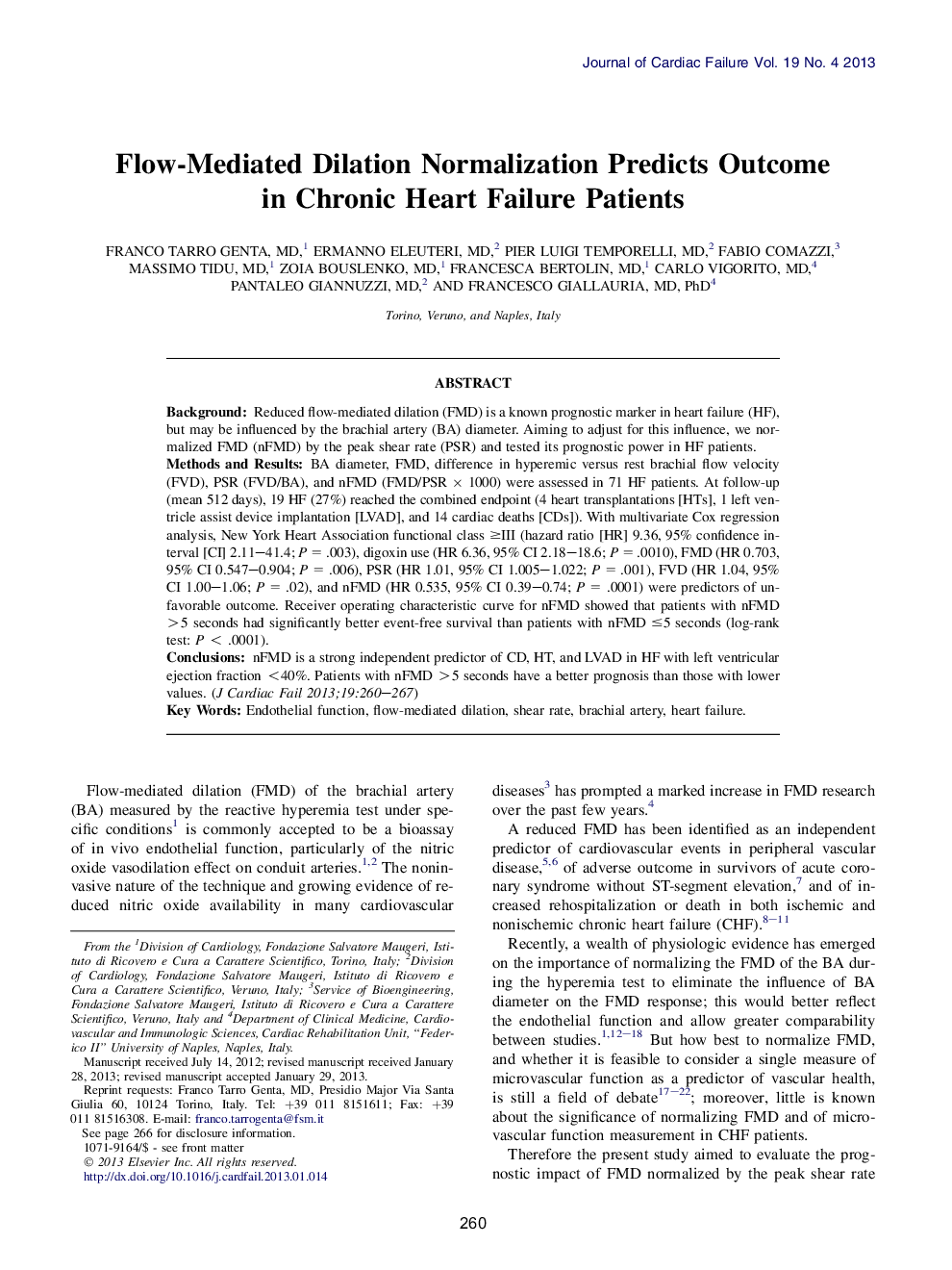| Article ID | Journal | Published Year | Pages | File Type |
|---|---|---|---|---|
| 2959238 | Journal of Cardiac Failure | 2013 | 8 Pages |
BackgroundReduced flow-mediated dilation (FMD) is a known prognostic marker in heart failure (HF), but may be influenced by the brachial artery (BA) diameter. Aiming to adjust for this influence, we normalized FMD (nFMD) by the peak shear rate (PSR) and tested its prognostic power in HF patients.Methods and ResultsBA diameter, FMD, difference in hyperemic versus rest brachial flow velocity (FVD), PSR (FVD/BA), and nFMD (FMD/PSR × 1000) were assessed in 71 HF patients. At follow-up (mean 512 days), 19 HF (27%) reached the combined endpoint (4 heart transplantations [HTs], 1 left ventricle assist device implantation [LVAD], and 14 cardiac deaths [CDs]). With multivariate Cox regression analysis, New York Heart Association functional class ≥III (hazard ratio [HR] 9.36, 95% confidence interval [CI] 2.11–41.4; P = .003), digoxin use (HR 6.36, 95% CI 2.18–18.6; P = .0010), FMD (HR 0.703, 95% CI 0.547–0.904; P = .006), PSR (HR 1.01, 95% CI 1.005–1.022; P = .001), FVD (HR 1.04, 95% CI 1.00–1.06; P = .02), and nFMD (HR 0.535, 95% CI 0.39–0.74; P = .0001) were predictors of unfavorable outcome. Receiver operating characteristic curve for nFMD showed that patients with nFMD >5 seconds had significantly better event-free survival than patients with nFMD ≤5 seconds (log-rank test: P < .0001).ConclusionsnFMD is a strong independent predictor of CD, HT, and LVAD in HF with left ventricular ejection fraction <40%. Patients with nFMD >5 seconds have a better prognosis than those with lower values.
